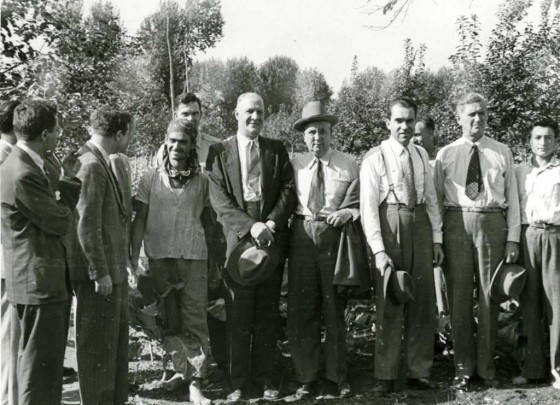Benn Steil is author of “The Marshall Plan: Dawn of the Cold War”
On July 30, 1947, then Congressman Nixon was selected by Speaker of the House Joe Martin to to be one of the nineteen members of a select committee headed by Congressman Christian Herter to make a trip to Europe and prepare a report in connection with the post -war foreign aid plan that Secretary of State George Marshall unveiled at Harvard University in June of that year.
“I learned a great deal from the Herter Committee trip,” Nixon later recalled. “I had taken a poll and found that 75 percent of my constituents in the 12th district [of California] were resolutely opposed to any foreign aid. This was the first time I had experienced the classical dilemma, so eloquently described by Edmund Burke, that is faced at one time or another by almost any elected official in a democracy: how much should his voters register his constituents’ opinions, and how much should they represent his own views and convictions? After what I had seen in and learned in Europe, I believed so strongly in the necessity of extending economic aid that I felt I had no choice but to vote my conscience and then try my hardest to convince my constituents.”
On this edition of the Nixon Now Podcast, we discuss the history of the Marshall Plan with Benn Steil.
Dr. Steil is senior fellow and director of international economics at the Council on Foreign Relations in New York. He is also the founding editor of International Finance, a scholarly economics journal; lead writer of the Council’s Geo-Graphics economics blog; and creator of three web-based interactives tracking Sovereign Risk, Global Monetary Policy, and Central Bank Currency Swaps. Prior to his joining the Council in 1999, he was director of the International Economics Programme at the Royal Institute of International Affairs in London.
His previous book “The Battle of Bretton Woods: John Maynard Keynes, Harry Dexter White, and the Making of a New World Order” was called “a triumph of economic and diplomatic history” by the Financial Times.
His new book, which he discusses in this podcast is called the “The Marshall Plan: Dawn of the Cold War.”
The Cold War historian John Lewis Gaddis calls the book “An Outstanding — and certainly timely — accomplishment. Former Federal Reserve Chairman Alan Greenspan, says this book “will open eyes and minds.”
Highlights
— Overview of the state of post-war Europe
— Political attitudes in the United States following World War II
— Who was George Marshall?
— Soviet activity in post-war Europe
— The theory of containment.
— How the Marshall Plan was devised
— U.S. Congress’s reaction to the Marshall Plan, and other criticisms
— The legacy of the Marshall Plan

Photo: In 1947, Freshman Congressman Nixon toured Europe to assess post-war conditions in continent, as member of special congressional commission.

